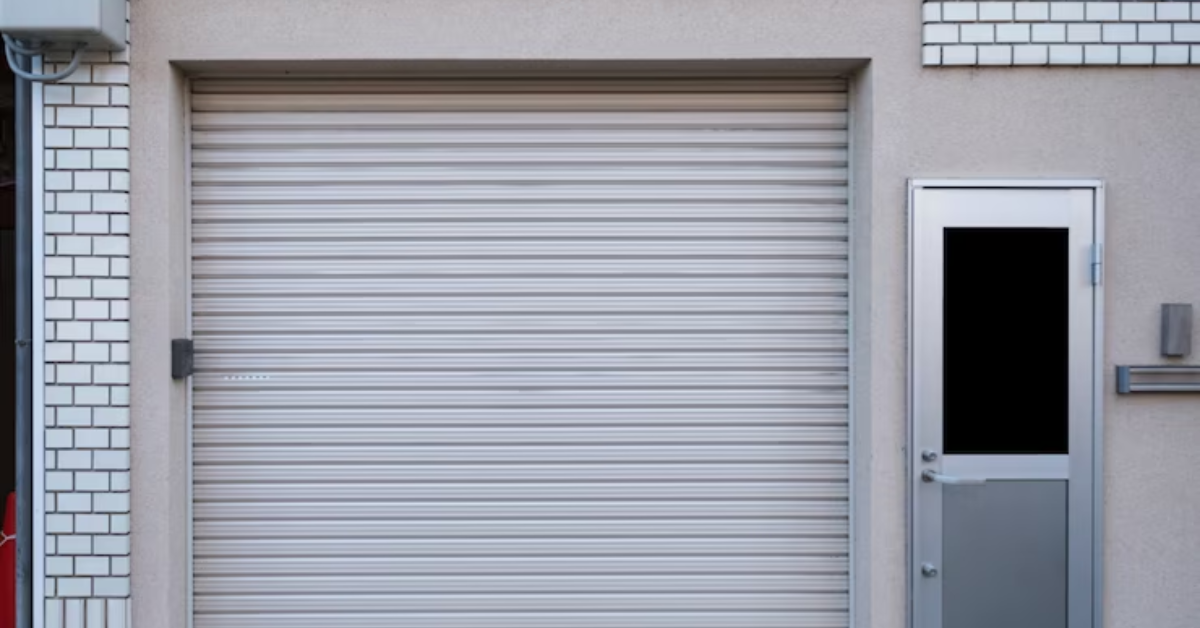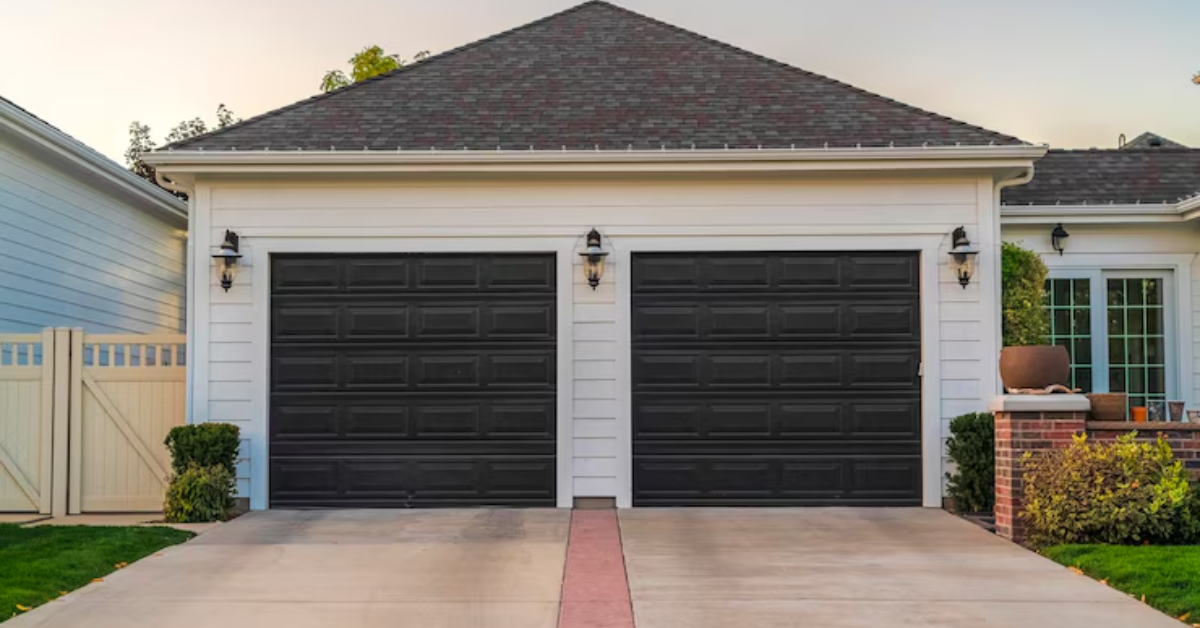How To Fix A Roll Up Garage Door?
Need a professional to fix your roll-up garage door quickly and efficiently?
Roll-up garage doors are a popular choice for many homeowners due to their space-saving design and convenience. However, like any mechanical system, they may encounter issues over time that require attention and repair. Roll-up garage doors operate by vertically lifting and rolling into a compact coil above the door opening. This mechanism allows for efficient use of space and makes them suitable for garages with limited ceiling clearance. Typically constructed from durable materials like steel or aluminum, roll-up doors are known for their strength, security, and longevity. Understanding the components and operation of roll-up garage doors is essential for effectively diagnosing and addressing any issues that may arise.
Common Issues with Roll Up Garage Doors
Despite their durability, roll-up garage doors may experience a variety of issues over time. Common problems include misalignment of tracks and guides, worn-out springs or cables, malfunctioning motors or operators, and damage to the door curtain. These issues can result in difficulty opening or closing the door, unusual noises during operation, or even complete failure of the door system. By identifying and addressing these common issues promptly, homeowners can ensure the continued functionality and safety of their roll-up garage doors.
Assessing the Problem
Before proceeding with any troubleshooting steps, it's essential to conduct a thorough inspection of the roll-up garage door components. Start by visually examining the door curtain, tracks, guides, springs, cables, and hardware for any signs of damage, wear, or misalignment. Pay attention to areas where parts may rub against each other or where debris could accumulate. Also, listen for any unusual noises during operation, as these can indicate underlying issues. By inspecting the door components carefully, you can better understand the nature of the problem and determine the appropriate course of action.
Once you've completed the inspection, focus on
identifying the root cause of the problem. Common issues with roll-up garage doors can stem from various factors, including mechanical wear and tear, improper installation, or environmental factors like temperature fluctuations and moisture. Consider the symptoms exhibited by the door, such as sticking, grinding, or uneven movement, and trace them back to their source. Isolating the cause of the issue will help you implement targeted troubleshooting steps and avoid unnecessary repairs or replacements.
DIY Troubleshooting Steps
Step 1: Checking for Obstructions
One of the most straightforward troubleshooting steps is to check for any obstructions obstructing the movement of the garage door. Inspect the tracks, guides, and surrounding areas for debris, such as dirt, leaves, or objects that may have fallen into the path of the door. Clear any obstructions that you find and ensure that the door can move freely along its tracks without encountering resistance.
Step 2: Lubricating Moving Parts
Proper lubrication is essential for maintaining the smooth operation of roll-up garage doors. Apply a lubricant specifically designed for garage door components to the rollers, tracks, hinges, and springs. Be sure to use a lubricant that is compatible with the material of your door components and follow manufacturer recommendations for application. Lubricating moving parts reduces friction, minimizes wear and tear, and helps prevent squeaking or sticking during operation.
Step 3: Tightening Hardware
Over time, the hardware securing various components of the garage door may become loose due to vibrations and movement. Inspect the nuts, bolts, screws, and brackets holding the tracks, guides, and other hardware in place. Use a wrench or screwdriver to tighten any loose hardware to the manufacturer's specifications. Be careful not to over-tighten, as this can cause damage to the components. Ensuring that all hardware is securely fastened helps maintain the structural integrity of the door and prevents issues such as misalignment or sagging.
Step 4: Adjusting Spring Tension
The tension of the springs plays a crucial role in balancing the weight of the garage door and facilitating smooth operation. If the door feels heavy or uneven during opening or closing, adjusting the spring tension may be necessary. Consult the manufacturer's instructions or seek professional guidance for adjusting the tension of torsion or extension springs safely. Keep in mind that adjusting spring tension can be dangerous and should be done with caution to avoid injury or damage to the door system.
Step 5: Aligning Tracks and Guides
Misaligned tracks and guides can cause the garage door to bind or jam during operation. Use a level to check the alignment of the tracks vertically and horizontally. If you notice any deviations from the ideal alignment, gently tap the tracks back into place using a rubber mallet or hammer. Ensure that the tracks are securely fastened to the mounting brackets and that there is no excessive gap between the tracks and the rollers. Proper alignment of tracks and guides promotes smooth movement of the door and prevents premature wear on components.
Follow these DIY troubleshooting steps to resolve common roll-up garage door issues and restore their functionality without contacting a professional. However, if you encounter more complex problems or are unsure about performing repairs safely, it's always best to consult a qualified technician for assistance.
Advanced Troubleshooting Techniques
Repairing or Replacing Damaged Components: In some cases, troubleshooting may reveal damaged or worn-out components that require repair or replacement. This could include damaged door panels, broken springs or cables, bent tracks, or malfunctioning rollers. Depending on the severity of the damage and your level of expertise, you may be able to perform minor repairs yourself using replacement parts and basic tools. However, for more complex repairs or if you're unsure about how to proceed safely, it's best to enlist the help of a professional technician to ensure the proper functioning and longevity of your roll-up garage door.
Adjusting Motorized Operators:
If you have a motorized roll-up garage door, issues with the motor or operator may require adjustment or calibration to restore proper operation. This could involve adjusting the motor's force or travel limits, resetting the programming or settings on the operator, or troubleshooting electrical issues such as faulty wiring or sensor alignment. Refer to the manufacturer's instructions or consult a professional technician for guidance on adjusting motorized operators safely and effectively.
Resetting Safety Features:
Roll-up garage doors are equipped with various safety features, such as auto-reverse sensors and manual release mechanisms, to prevent accidents and injuries. If these safety features are not functioning correctly, it may be necessary to reset or recalibrate them to ensure proper operation. This could involve checking and adjusting the sensitivity of the sensors, inspecting and lubricating the manual release mechanism, or troubleshooting electrical connections. If you're unsure about how to reset safety features or if they continue to malfunction after troubleshooting, seek assistance from a qualified technician to avoid compromising the safety of your garage door system.
The Right Time to Seek Professional Help
While many issues with roll-up garage doors can be addressed through DIY troubleshooting, some problems may require professional expertise to diagnose and repair effectively. Complex issues such as structural damage, motor or electrical failures, or extensive component wear may be beyond the scope of DIY repair and could worsen if not addressed properly. If you encounter symptoms such as persistent misalignment, unusual noises, or erratic behavior during operation, it's best to seek professional help to prevent further damage and ensure the safety and functionality of your garage door.
Safety Considerations
Working on roll-up garage doors can pose various safety hazards, especially when dealing with heavy components, high tension springs, or electrical systems. Attempting repairs without the necessary knowledge, tools, and safety precautions could result in accidents or injuries. If you're uncertain about how to perform repairs safely or lack the expertise to handle complex issues, it's important to prioritize safety and seek professional assistance. Qualified technicians have the training and experience to address repairs safely and efficiently, reducing the risk of accidents and ensuring peace of mind for homeowners.
Hiring a Qualified Technician
When it comes to repairing roll-up garage doors, hiring a qualified technician is often the best course of action, especially for complex or potentially hazardous issues. A professional technician will have the knowledge, skills, and specialized equipment needed to diagnose and repair problems accurately, minimizing downtime and ensuring the long-term reliability of your garage door system. Professional technicians can provide valuable advice on preventive maintenance, safety precautions, and potential upgrades to improve the performance and efficiency of your roll-up garage door. When in doubt, trust the expertise of a qualified technician to keep your garage door operating smoothly and safely.
Preventive Maintenance Tips
Regular Inspection Schedule: Establish a regular inspection schedule to check for any signs of wear, damage, or misalignment in the components of your roll-up garage door. This includes visually inspecting the door curtain, tracks, guides, springs, cables, and hardware for any issues. Regular inspections help catch potential problems early and prevent more significant issues from developing over time.
Cleaning and Lubricating:
Regularly clean the tracks, guides, rollers, and hinges of your roll-up garage door to remove dirt, debris, and buildup that can affect its operation. Additionally, lubricate the moving parts with a garage door lubricant to reduce friction and ensure smooth operation. Cleaning and lubricating your garage door components can help prevent premature wear and extend the lifespan of your door system.
Seasonal Maintenance Checklist:
Develop a seasonal maintenance checklist to address specific maintenance tasks at different times of the year. For example, in the fall, you may want to inspect and clean the tracks and guides to remove leaves and debris that could accumulate during the autumn months. In the winter, check for signs of rust or corrosion on metal components and apply a rust inhibitor if necessary. Similarly, in the spring, inspect the springs and cables for signs of wear and tension adjustment. By following a seasonal maintenance checklist, you can ensure that your roll-up garage door remains in optimal condition throughout the year.
Conclusion
By following the troubleshooting steps outlined in this guide, homeowners can address common issues with roll-up garage doors effectively and restore their functionality. Proper maintenance plays a crucial role in ensuring the longevity and efficiency of roll-up garage doors, preventing costly repairs and ensuring safe operation. By staying proactive with maintenance routines and addressing issues promptly, homeowners can enjoy the convenience and reliability of their roll-up garage doors for years to come.




